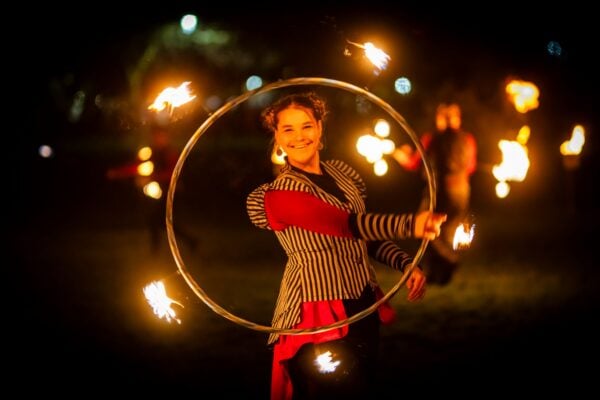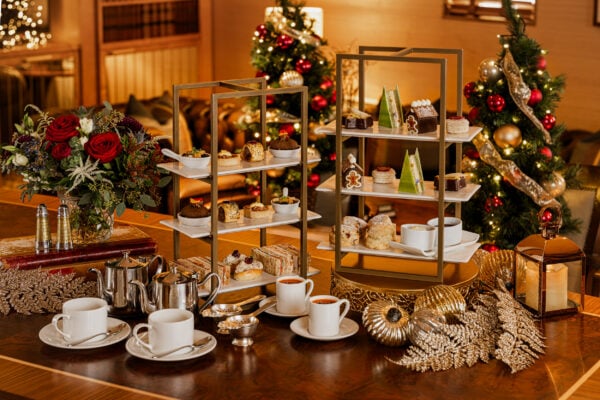Established by King David I in the 12th century as one of Scotland's earliest royal burghs, it’s not surprising that Edinburgh overflows with history. But many of the city’s stories are hidden deep underground – you may have walked over them for years and never given them a second thought!
Edinburgh’s secrets are everywhere – you just need to know where to look……
Tip 1: Discover the secrets under Edinburgh’s streets on a guided tour.
Tip 2 Embrace the atmosphere and immerse yourself in the experience.
Tip 3 Capture your favourite moments and share your discoveries with us using #ForeverEdinburgh.
Barnton Bunker
Housed in a former top-secret Cold War nuclear bunker.
Discover the history and secrets of Barnton Bunker, a former top-secret Cold War nuclear bunker in the heart of Edinburgh and the largest of its kind in the country. The bunker was built in the 1950s and was designed to house up to 400 civil servants and government officials who would run the country in the event of a nuclear attack.
Join them every Saturday at 1pm for a guided tour to experience the past like never before and see the ongoing restoration efforts to bring it back to life.
The Real Mary King’s Close
Being a preserved underground street, offering a glimpse into Edinburgh’s dark and intriguing past.
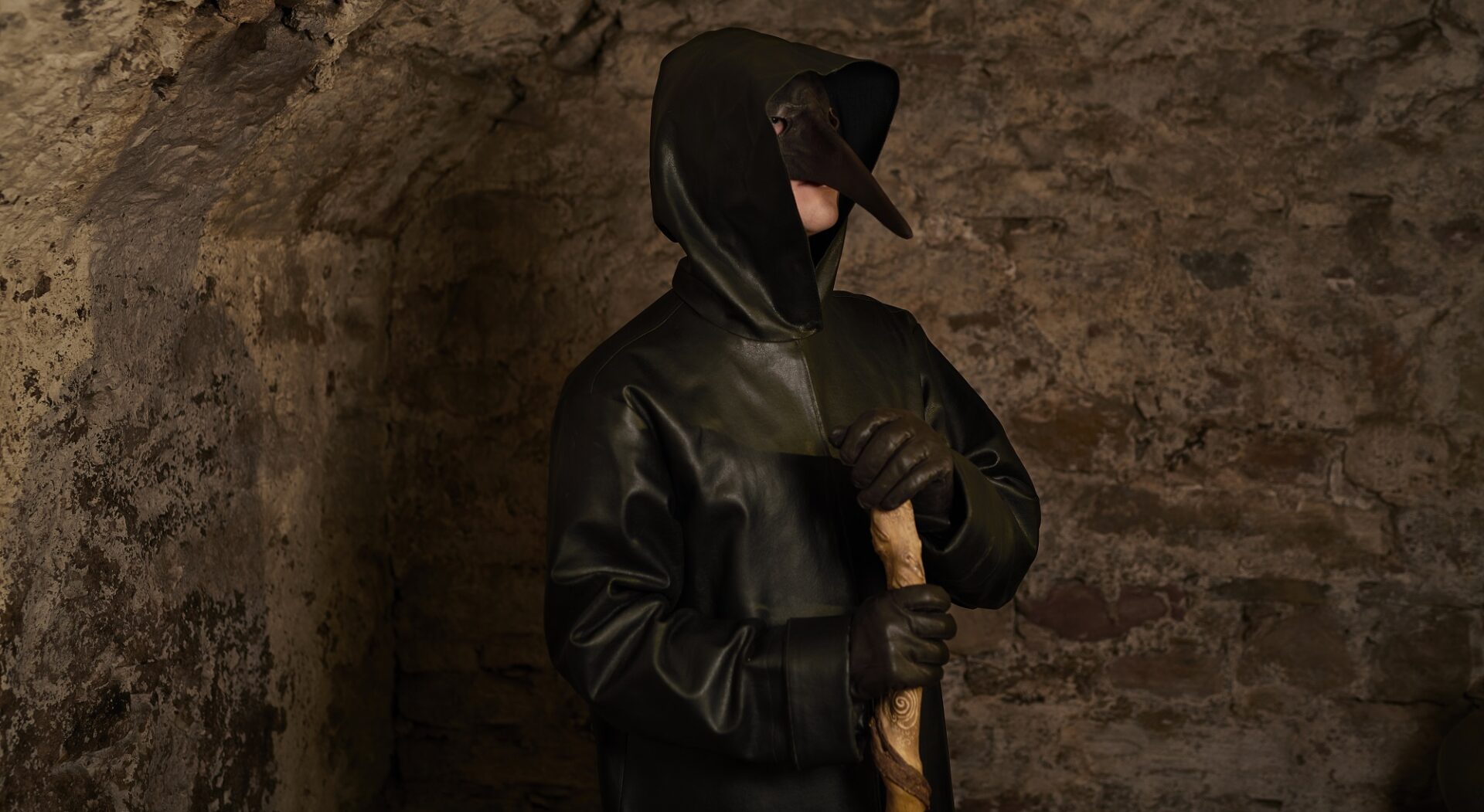
Imagine a warren of underground streets frozen in time. Step inside The Real Mary King’s Close and that is exactly what you’ll find. Once part of the city’s most vibrant streets, this perfectly preserved close provides a fascinating glimpse into Edinburgh life between the 17th and 19th centuries.
Named after Mary King, a fabric merchant who built her own business after her husband’s death, a tour of the close is brought to life by one of the costumed character tour guides. This could be Agnes Chambers, a maid in the household of a merchant burgess, or Dr George Rae, the Plague Doctor who tended to victims when the 1645 plague hit Edinburgh.
They also run a fantastic programme of year-round events which explore different themes on life on the close.
Free audio guides are available in nine languages. For guests with hearing impairment needs, scripted copies of the tour are available.
The Underground Vaults
Its sinister history. Where infamous ghostly encounters and paranormal activity are said to have taken place.
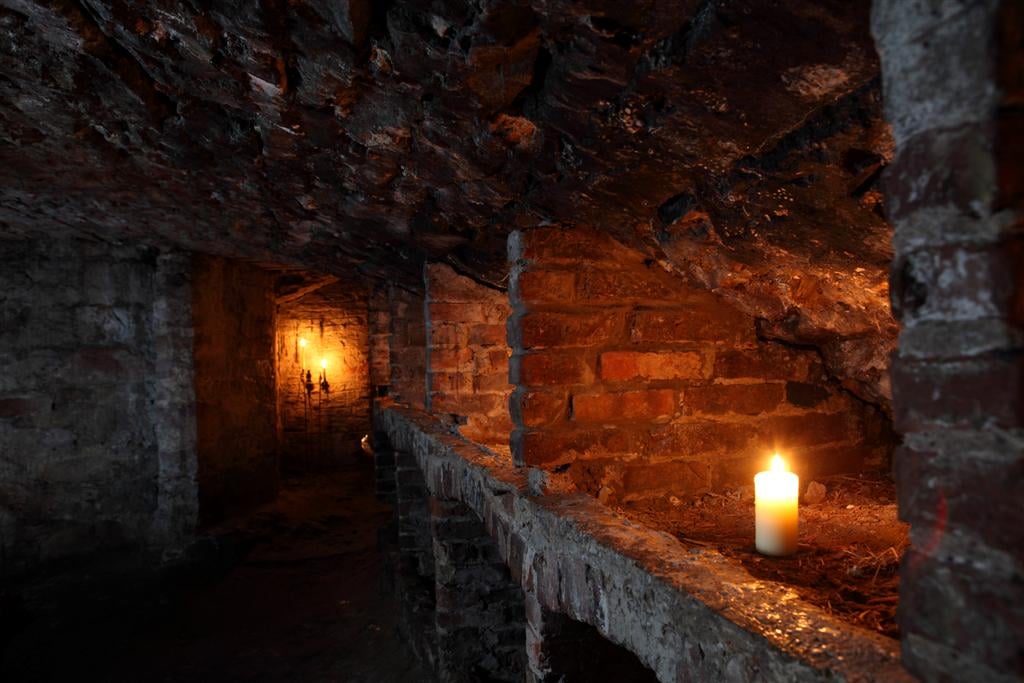
Constructed from 1785 onwards and linking the Old Town’s High Street with the south of the city, South Bridge consisted of 19 arches. Today, only Cowgate Arch is visible.
Rooms beneath the arches were commonly used as pubs and by tradespeople. However, South Bridge had never been properly waterproofed and over time it began to leak. The vaults below became damp, unusable areas and, eventually, the businesses moved out.
Over time, the vaults took on a new, less pleasant purpose. The poor and destitute moved in and they became slums, brothels and illegal taverns. Damp, dark, cramped, with no fresh water and sanitation, they would have been rife with disease. A hotbed of crime, it’s also believed that 19th century murderers Burke and Hare prowled here looking for unsuspecting victims, whose bodies were then sold to the university’s medical school’s for dissection.
Eventually, the vaults were sealed up and forgotten about. That was until 1985, when a chance excavation revealed the warren of tunnels and rooms. Items found included toys, clay pipes, buttons and ceramic jars.
Today, this unique piece of Edinburgh’s history is now open to the public – several walking tour companies will escort you down to the eerie atmospheric chambers, including Mercat Tours, Auld Reekie Tours and City of the Dead Tours. But be on your guard, said to be one of Scotland’s most haunted underground experiences, you never know who you’ll bump into!
Princes Street Gardens
Being a beloved public park hiding stories of ancient legend and mysterious happenings.
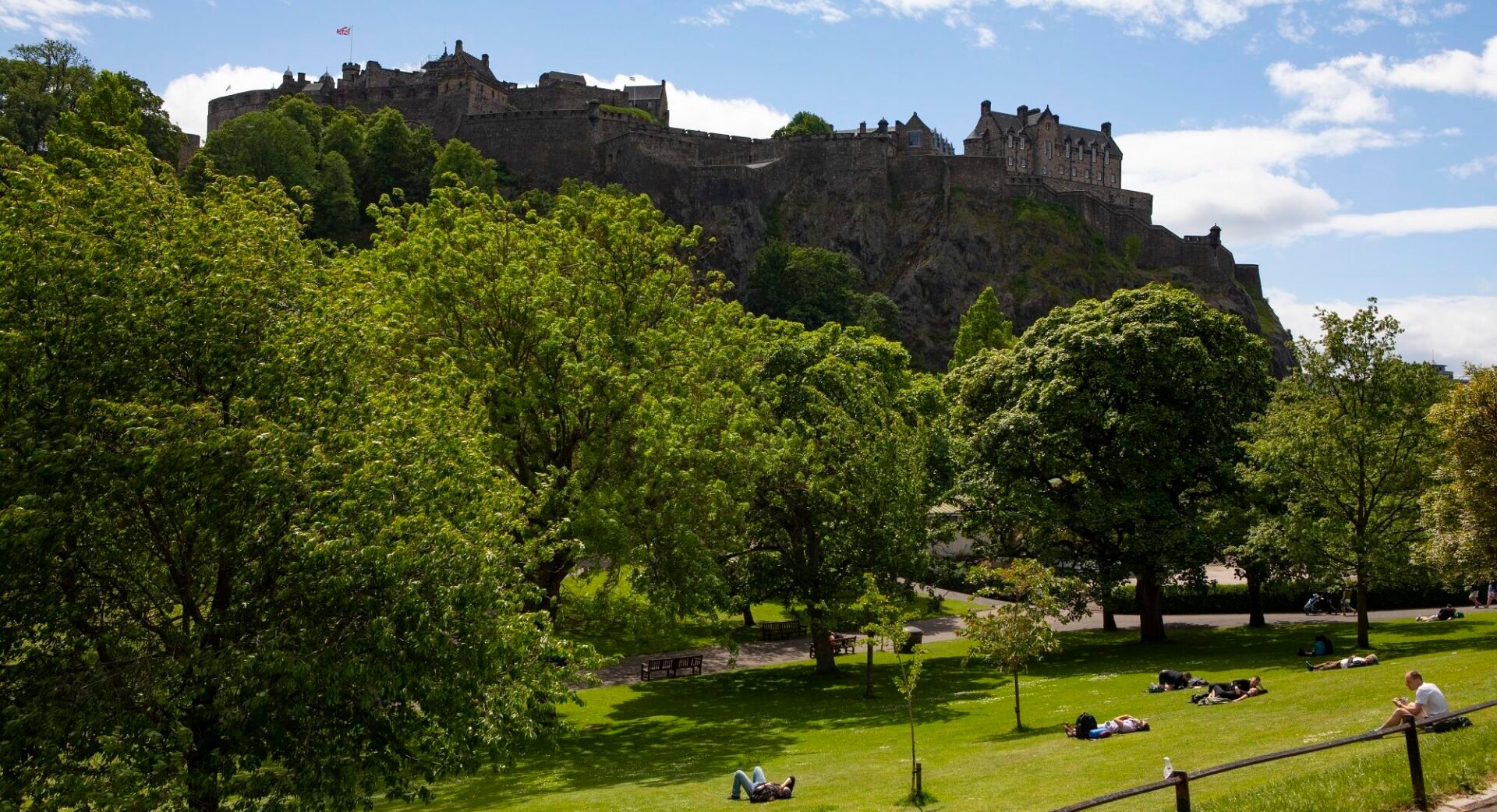
Today it is filled with lush gardens, historic monuments and has panoramic views up to Edinburgh Castle, The Mound and the Old Town, but Princes Street Gardens was not always such a picturesque scene.
A man-made body of water covering the site of today’s gardens, the Nor Loch is believed to have been created in the mid 15th century under the instruction of King James II. Stretching from the castle rock to present day Market Street, it protected the city from the always present threat of invasion.
As the population grew, the loch became an open sewer for the city.
Demands to get rid of the Nor Loch started in the early 18th century and in the 1760s it was drained. Developed in stages from east to west between 1830 and 1876, the beautiful Princes Street Gardens now occupies the site of the former loch – a much more tranquil scene than in days gone by.
A disused railway tunnel
This tunnel whispers tales of forgotten transportation and secrets beneath the city.
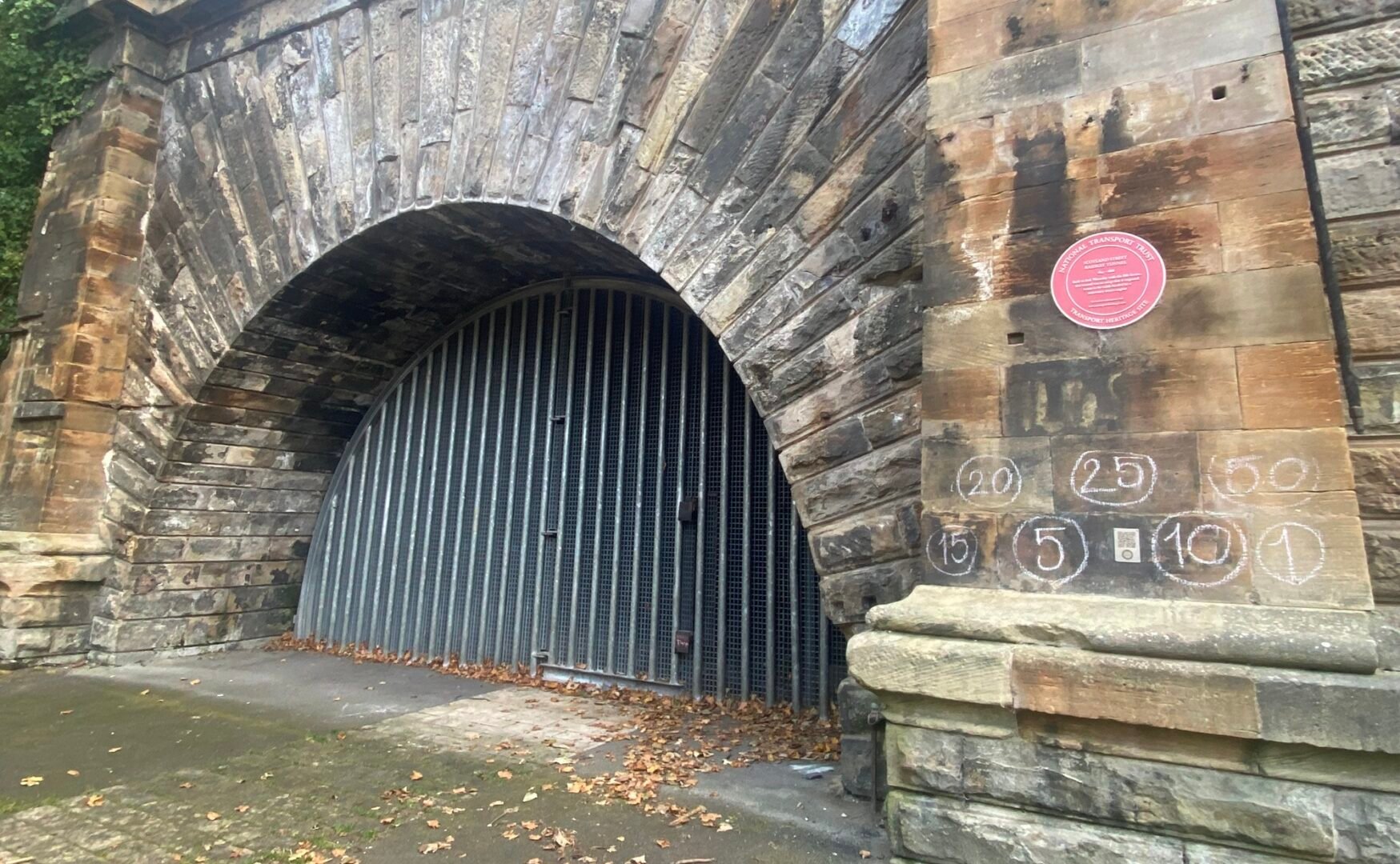
Buried 49 feet below St Andrew Square is a railway tunnel 1000 yards long and 24 feet in width. It was closed to passengers in 1868, just 21 years after it opened.
However, it has since had a colourful history. During WWII it became Edinburgh’s biggest bomb shelter. It was also used briefly as a mushroom farm (its dark and damp conditions being ideal for cultivation) and again in 1948, when a visiting professor conducted a series of radiation experiments. For a brief period in the 1970s it was used by a local garage to store up to 150 cars.
Something to think about as you browse the shops in Waverley Market, which accommodates the area now.
Colinton Tunnel
Being an enchanting mural in an abandoned Victorian tunnel.
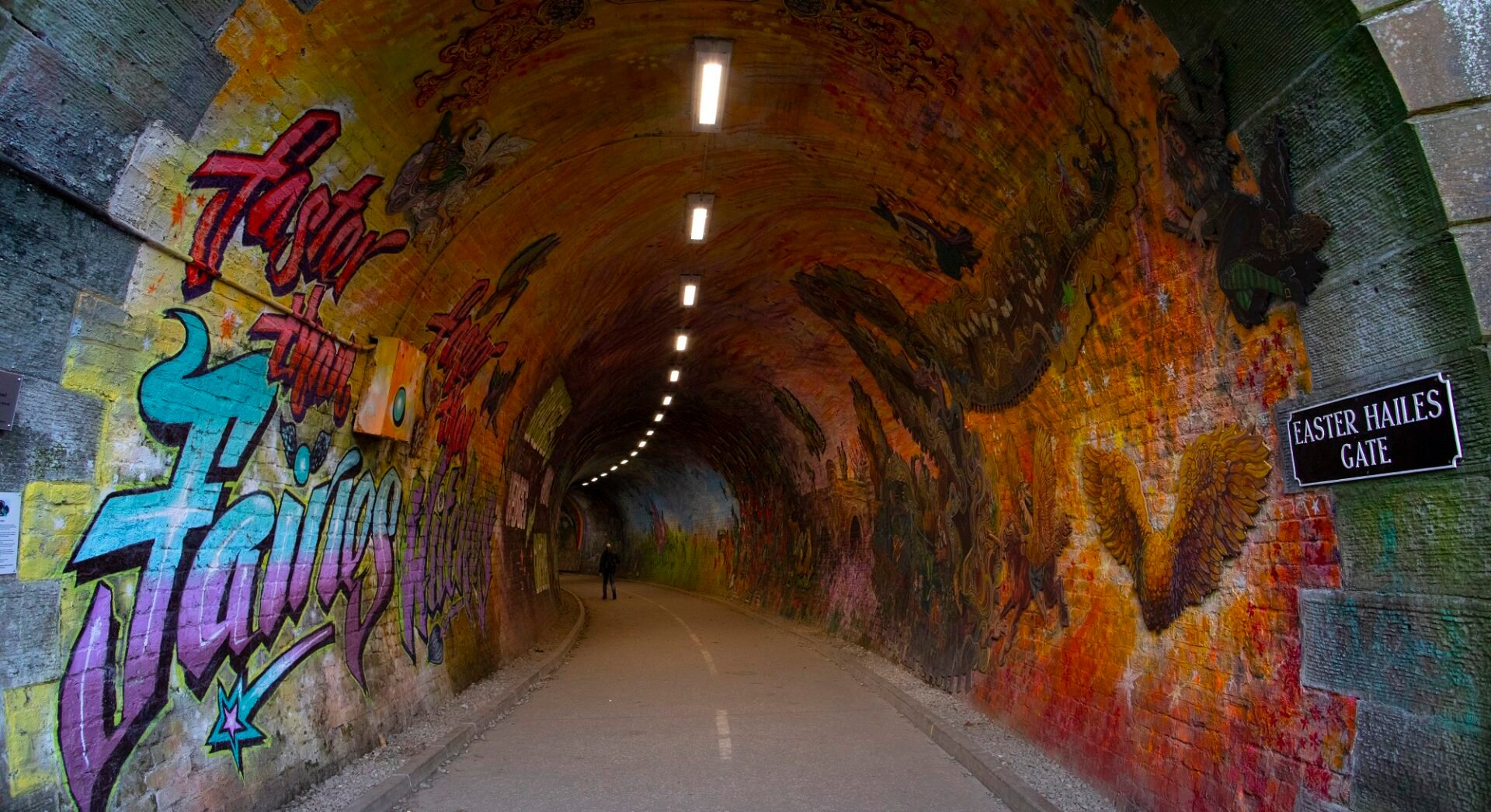
Celebrating local history and heritage, this once abandoned railway tunnel has been transformed by artist Chris Rutterford into the biggest mural of its kind in Scotland.
Featuring illustrations from Edinburgh author and poet, Robert Louis Stevenson’s From a Railway Carriage, as you wander through Colinton Tunnel keep an eye open for a magical train, fairies and witches.
Looking to capture an amazing Instagram shot? You’ll find plenty of inspiration here. Remember to tag us using #ForeverEdinburgh and #edinphoto and we could share your image on our social channels.
Sanctuary Stones
Providing protection to debtors in days gone by.

Outside The Palace of Holyroodhouse can be found a row of three copper ‘S’ cobblestones – but what do they mean?
Known as Sanctuary Stones, these markers signify the 5-mile boundary known as Abbey Sanctuary that gave protection to debtors seeking refuge from their creditors. In times when minor theft could warrant a hanging, those pursued were offered food and housing within these confines.
In 1880 a law was passed that meant debtors could no longer be thrown in prison and many of the old sanctuary buildings were demolished. One, however, still exists, directly outside the Palace.
The Heart of Midlothian
Being a symbol of Edinburgh’s historical heart.

On the surface, the heart-shaped mosaic set in the cobblestones on the Royal Mile may look like a romantic symbol, but in its past life, this area was a far from romantic destination.
The mosaic marks the site of the Old Tolbooth. A multi-use building, it was used as a place for collecting tolls as well as a council chamber and courthouse. But it was as a prison that it was most fearsomely regarded, becoming notorious for its squalid conditions and torture treatment. The conditions were so bad that in 1561 Mary, Queen of Scots ordered it to be demolished and rebuilt. The new building became Edinburgh’s main jail and amongst its new features included a heart on its doorway. In time, the entrance to the jail was marked out using cobbles in the shape of a heart.
Today – much to the bewilderment and disgust of the unwitting tourist – it has become customary to spit on the heart for good luck, although nobody can say for sure why. Some believe it’s a practice left over from when passers-by would spit at prisoners in solidarity, or that it was the prisoners themselves who spat on the heart if they found themselves lucky enough to be released. Some say it’s a gesture of good luck for the local Edinburgh football team, Hearts, whose emblem is derived from the stone heart.
Whatever the reason, today it’s a popular photo location for tourists…. just watch out for the spitting.
Discover more about Edinburgh’s spooky attractions.
Intrigued by tales of mystery, supernatural and ghostly presences? Edinburgh has some spine-chilling attractions that are not to be missed!

